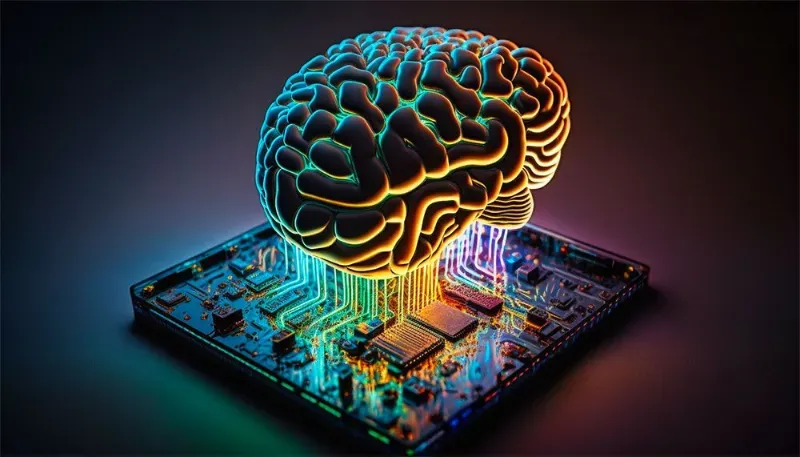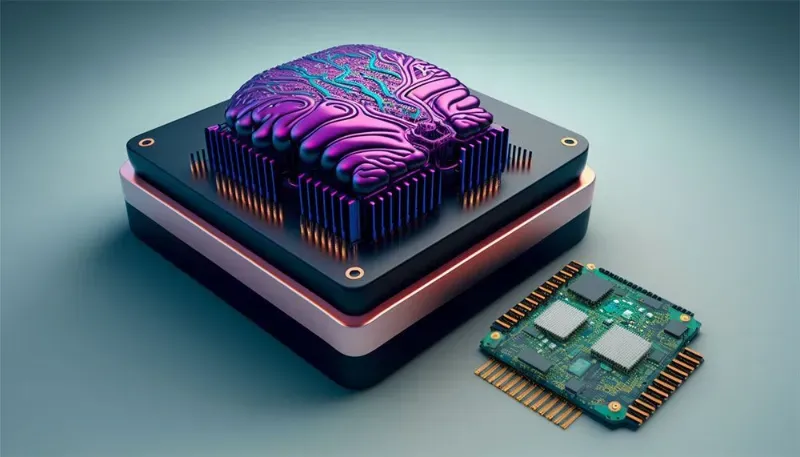Discover the future of computing with neuromorphic technology, inspired by the human brain to deliver unparalleled energy efficiency, adaptability, and real-time data processing. Learn how neuromorphic systems are revolutionizing robotics, autonomous vehicles, healthcare, and more. Stay ahead with the latest advancements in neuromorphic computing by ChapterTech.For more informative news , stay updated with our other blogs too.
In this post, I shall discuss some useful and important insights with you regarding this technology.I hope that this post will be helpful.
What is Neuromorphic Computing?
Neuromorphic computing is a groundbreaking technology designed to replicate how the human brain functions. By using artificial neurons and synapses, it processes information in a way that closely resembles our brain's neural activity. This brain-inspired approach makes data processing not only more efficient but also highly adaptable.
One of the standout benefits of neuromorphic computing is its incredible energy efficiency. It can handle complex tasks while using significantly less power, making it perfect for a variety of applications. This technology holds the potential to transform industries like robotics, healthcare, and autonomous vehicles, paving the way for smarter, more energy-efficient systems.
How does Neuromorphic Computing work?
Neuromorphic computing is made possible by Artificial Neural Networks (ANNs), which are made up of millions of artificial neurons designed to imitate how the brain works.
These artificial neurons help machines think and act like humans by sending signals to one another. These signals are electrical pulses, called spikes, that turn input into output. This technology opens up many new possibilities for computing power, much like how UV printers have revolutionized the printing industry with high-quality results.
The flow of electrical pulses works through Spiking Neural Networks (SNNs), which allow machines to copy brain activity and perform tasks we do every day.
Neuromorphic computing machines are very energy-efficient because their artificial neurons only use electricity when the pulses pass through them. This means that tasks like recognizing images and processing data can be done with very little energy. Compared to regular computers, neuromorphic computing offers a more sustainable way to carry out complex tasks.
These devices mimic the brain’s natural network, enabling them to think and solve problems at high speeds and with great accuracy.
What is the importance of Neuromorphic Computing?
Neuromorphic AI computing is an important area in artificial intelligence. It plays a big role in changing how computers work. By using advanced technology, neuromorphic computing allows computers to function more like the human brain, leading to exciting new breakthroughs and fast progress in technology.
Neuromorphic computing chips have changed the way computers operate. These chips have not only made computers faster but also brought new abilities. From analyzing data to running machine learning programs, these chips can do almost anything today!
What is the future of Neuromorphic Computing?
Neuromorphic computing is expected to be the future of Artificial Intelligence (AI). This new phase, or "third wave," of AI brings exciting improvements that will help push the technology forward and shape its role in the coming years.
The current generation of AI faces challenges, such as expensive hardware and limited storage, but neuromorphic computing can solve these issues. This new technology would not only reduce these problems but also allow computers to do tasks similar to what humans can do.
A report from Research and Markets predicts that the neuromorphic computing market will grow rapidly, reaching over $1.78 billion by 2025. This growth is mainly due to the growing need for AI, which requires a lot of computing power. As a result, neuromorphic computing will be key in making AI more powerful in the future.
MAJOR DEVELOPMENTS & MILESTONES
What are the major developments and milestones in neuromorphic computing?
In 2006, researchers at Georgia Tech created a chip that could be programmed to act like the way brain cells (neurons) work. This was one of the first attempts to make a silicon chip that could simulate brain activity.
In 2011, MIT scientists created a chip that copied how neurons send signals in the brain using 400 small parts called transistors. This chip was one of the first to use basic manufacturing methods to make brain-like connections.
By 2012, researchers at Purdue University designed a neuromorphic chip using new materials that worked similarly to neurons. This chip was more energy-efficient than traditional chips.
Researchers at HP Labs worked with a special device called a Mott memristor. These devices behave like neurons and can be used to build a system that functions like a computer.
Neurogrid, developed by Stanford University, is another example of a brain-inspired machine. It uses 16 custom-designed chips to act like neurons, and it’s built to save energy.
A major project, the Human Brain Project, is focused on creating a digital copy of the human brain using a supercomputer. The goal is to understand the brain better and use that knowledge to build smarter computers.
In 2013, IBM created a neuromorphic chip called TrueNorth, designed to work like the human brain. It’s based on neuromorphic computing principles.
Scientists have also explored using tiny particles like nanocrystals and nanowires to build brain-like devices. MIT researchers are working on creating artificial brain connections, or synapses, that can learn, much like the brain.
In 2017, Intel introduced a neuromorphic chip called Loihi. This chip works by using spiking neural networks (SNNs) to learn tasks more efficiently.
IMEC, a research center in Belgium, created a chip that can learn on its own and even compose music by recognizing patterns in old songs.
The Blue Brain Project is trying to create a digital version of a mouse brain. This will help scientists understand how the brain is structured and works.
In Germany, researchers developed a supercomputer called BrainScaleS to simulate how the brain works much faster than in real life. This project is also helping scientists understand the brain better.
In 2019, the European Union started a project called Neuromorphic Quantum Computing, which looks at using neuromorphic computing for quantum tasks. This type of computing might help solve complex problems faster.
In 2021, Brainchip released its Akida AI Processor, which became the world’s first commercially available neuromorphic processor.
What are the uses of Neuromorphic Computing?
Robotics: Neuromorphic computing helps robots sense and move more like humans, making it easier for them to make decisions on their own. It helps robots understand and interact with their surroundings better.
Internet of Things (IoT): In IoT devices, neuromorphic chips can process information on the device itself. This means less need to send data to central servers, saving internet bandwidth and making the process faster.
Edge Computing: Neuromorphic computing helps reduce delays and protect privacy in edge computing by processing data directly at the source, instead of sending it to the cloud for processing.
Conclusion
In conclusion, neuromorphic computing represents a groundbreaking shift in the world of technology. By mimicking the complex processes of the human brain, it holds the potential to revolutionize industries, from robotics and artificial intelligence to healthcare and data processing. This technology not only promises to make computers faster and more efficient but also to bring us closer to creating machines that can think, learn, and adapt like humans. As neuromorphic computing continues to evolve, its impact on the future of AI and technology could be profound, leading to smarter, more autonomous systems that could shape the next wave of innovation across the globe. The road ahead is exciting, and as this technology matures, the possibilities for its application are endless.











0 Comments